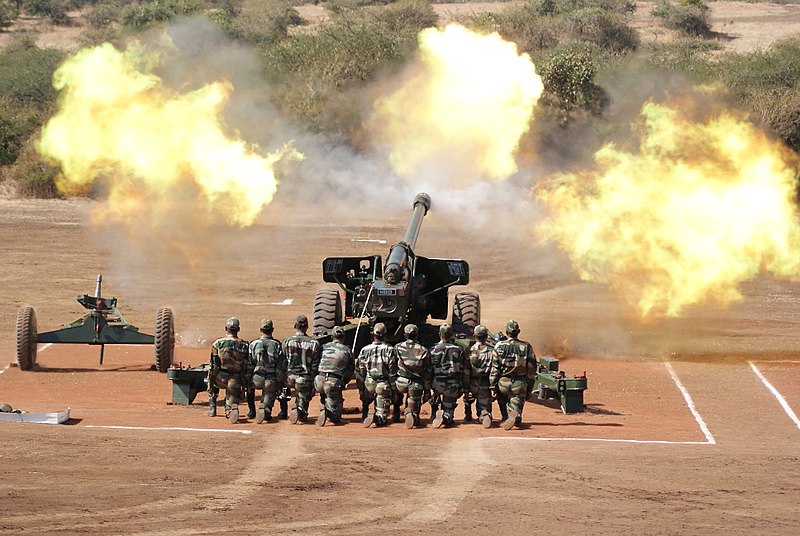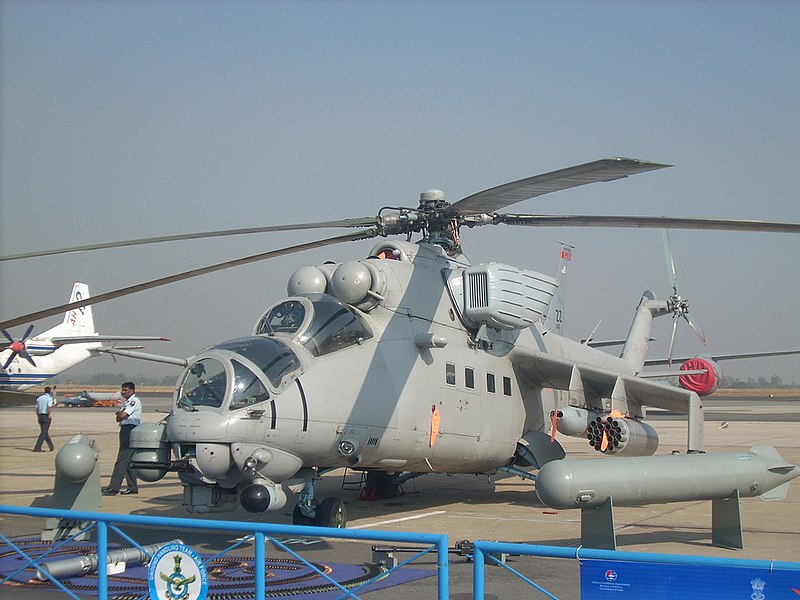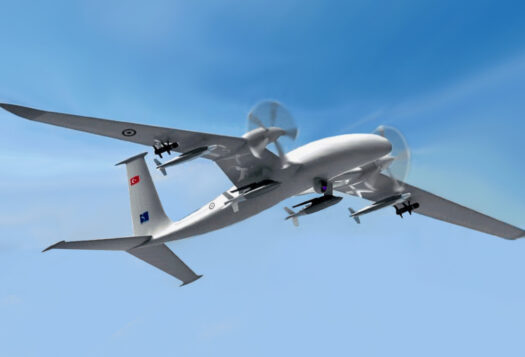
India has recently released its fourth Positive Indigenization List (PIL), a list that contains 928 new sub-systems, spare and components, and assembly parts of major weapons systems to be manufactured by domestic arms industries. Before the fourth PIL, the government released three such lists containing 1,238 items (351 in the first list, 107 in the second, and 780 in the third) besides 2,500 items in Annexure-A of the first list which have already been indigenized. Efforts by the Indian government in recent years have significantly increased confidence among local vendors to promote domestic arms manufacturing and subsequently improve the Indian economy. These efforts boost the Modi government’s Atmanirbhar Bharat or “self-reliant India” campaign, promote India as a major arms exporter, and serve the technological demands of the Indian armed forces.
New Delhi’s enormous indigenization and export claims have been questioned by the Stockholm International Peace Research Institute (SIPRI) arms transfer database, 2022. The latest SIPRI report has ousted India from the top 25 arms exporters list for 2018-2022. SIPRI’s report last year placed India in 23rd position in the list for 2017-2021. There are several reasons why India was excluded from the top exporters lists – namely less production and technological capability, tough competition among exporters, financial issues, and diplomatic lags in reaching out to foreign customers. Failure in domestic arms production has not only kicked India away from the arms exporters’ race but has also been responsible for India topping the importer’s list despite an 11 percent decrease between 2013-17 and 2018-22. The two events are intermingled and closely associated with India’s arms indigenization and export policies.
Indigenization Plans versus Production Capability
India’s arms import and export stood at $1.5 billion and $1.3 billion respectively in FY 2018-19. In 2019-20, figures for import and export reached $3.1 billion and $1.1 billion. The import-export sheer imbalance became the major driver for initiating Atmanirbhar Bharat in May 2020, where the government strives to decrease its bulky arms import from foreign companies by promoting domestic arms manufacturing. With the objective of plugging the arms trade deficit, the current Indian government emphasized promoting domestic arms manufacturing to cut its imports from foreign vendors and export arms to friendly foreign countries. The Draft Defense Production and Export Promotion Policy 2020 under the Atmanirbhar Bharat vision aimed at establishing a defense industry of $25 billion by 2025 including the export of defense articles worth $5 billion.
With the objective of plugging the arms trade deficit, the current Indian government emphasized promoting domestic arms manufacturing to cut its imports from foreign vendors and export arms to friendly foreign countries.
India announced its Defense Acquisition Procedures (DAP) in 2020, a modified and re-named version of the Defense Procurement Procedure (DPP). With the DAP 2020, the Ministry of Defense (MoD) took forcible measures to cut its dependence on foreign manufacturers. Consequently, MoD released three Negative Lists containing 310 defense equipment platforms planned to be manufactured in India between December 2020 and December 2027. These lists contain not just spare assembly parts but the complete weapon system for big ticket products like naval utility helicopters, medium anti-ship missiles, drones, artillery guns, and lightweight tanks. All 310 items are planned to be designed and developed by domestic manufacturers to meet the ambitious aspirations of Atmanirbhar Bharat. Additionally, in its Defense Budget 2023, the Indian government earmarked 75 percent of its capital procurement budget for the domestic industry in FY 2023-24, up from 68 percent in FY 2022-23 and 58 percent in 2021-2022. By this measure, the government now authorizes the Indian armed forces to utilize weapons systems from domestic manufacturers to cut foreign dependence.
India’s failure to maintain its position among the top 25 arms exporters in the world has resurfaced old concerns regarding arms manufacturing. The aspirations of the central government from the domestic arms industries came more as a burden than an opportunity due to its lack of expertise in arms production, both quantitative and qualitatively. The major concern before domestic industries is the timely production of defense articles and the fulfilment of military demands of foreign buyers and Indian defense forces. India has traditionally never been an arms manufacturing country, relying mainly on foreign vendors for its military needs. Arms production has always been in debate. However, the defense industry got a major boost from the Kelkar Committee recommendations in 2005 that gave birth to the Defense Procurement Procedures (DPP). Earlier, arms production was mainly handled by the public sector companies which perform at a slower pace. The committee laid the foundation of a Public-Private Partnership (PPP) in arms manufacturing by promoting the private sector in handholding the workload of public sector companies. The committee also suggested expanding the scope of arms manufacturing by involving the private sector against the monopoly of public sector companies.

Quality of Product
Apart from the quantitative failure, Indian arms industries have also lacked qualitatively. Ensuring national security is of utmost priority for any nation and hence the armed forces should not compromise the quality and efficacy of their weapons systems. Despite some limited success, Indian arms industries have still not recognized themselves as a major exporter of arms. Technical glitches, mechanical failures, lack of technical and operational support to the customers after the finalization of deals, and low-technology products have often hindered India’s way in arms sales. Incidents of air accidents are still haunting the Indian Air Force and foreign customers, which has resulted in a lack of trust in Indian products.
In 2009, Ecuador signed a contract for seven Dhruv Advanced Light Helicopters with Hindustan Aeronautics Limited (HAL) for $45.2 million. In just a few years of service, four of the seven ALHs crashed due to machine failure. Following the accident, Ecuador grounded all the remaining ALH and in 2015, and scrapped the contract unilaterally. In India, ALHs crashed due to technical glitches in May 2020, January and August 2021, and May 2023, and four emergency landings have occurred since 2020. In October 2022, the Indian Army-operated Rudra Light helicopter, an armed variant of ALH Dhruv, crashed in Arunachal Pradesh killing all five crew members on board. India solely registered 46 cases of air accidents of Chetak helicopters between 1963 and 2019. In 2016, Indian Naval Chief Admiral Sunil Lamba rejected the naval version of the LCA Tejas aircraft. Last year, the accidental misfire of a BrahMos missile landed in Pakistani territory and inflicted a loss of $2.92 million. All these incidents create uncertainty in the minds of potential buyers.
Level of Competition
South Asia is a complex and volatile region with three nuclear powers. The combined China-Pakistan threat has driven New Delhi’s security outlook in recent years and accelerated its interest in domestic arms production. While Pakistan maintained its position as the third largest arms importer in South Asia – up by 14 percent between 2013-17 and 2018-22 – China has become the fifth largest arms importer in the world with 4.6 percent of global arms imports for 2018-22. The tension between India and China over borders in recent years has also aggravated the situation, resulting in the militarization of borders.
Moreover, unlike China exporting 54 percent of its arms to Pakistan, India has no trusted buyers in South Asia or any other region.
India, a traditional buyer of arms, shifted its approach and entered into the top 25 potential exporters. Being a latecomer, New Delhi faced tough competition. The United States remained the top arms exporter accounting for 40 percent of the global arms export in 2018-2022, up by 14 percent from 2013-2017, whereas China topped the list in South Asia. Myanmar and Sri Lanka, the top two destinations for India’s arms, also receive significant arms from China. Moreover, while China exports 54 percent of its arms to Pakistan, India has not developed trusted buyers in South Asia or any other region.
The only big success that came into India’s bag is a $375 million deal with the Philippines for three batteries of BrahMos supersonic cruise missiles, which are not the sole product of India. Additionally, in 2022, the Royal Malaysian Air Force (RMAF) shortlisted the Light Combat Aircraft (LCA) Tejas, manufactured by Hindustan Aeronautics Limited (HAL) for an order of 16 planes.
India is mainly exporting Dhruv and Chetak helicopters, avionics, small arms, sonar systems, personal protection gear, radars, and major assembly or replacement parts. India first focused on advancing its arms technology before transiting from the sale from sub-assembly parts to a complete package of weapons systems. In the coming month, emphasis will increasingly be placed on the mass production and export of potential platforms such as BrahMos missiles, the Pinaka Multi-Barrel Rocket Launch (MBRL) system, Akash air-defense system, anti-tank mines, artillery guns, and naval crafts. As New Delhi aims to emerge as an arm exporter, India will need to explore international markets and develop trusted buyers by engaging in diplomatic efforts and furthering arms sales strategies.
Also Read: Ten-Year Review of China’s Defense Budget: Steadily Toward Modernization
***
Image 1: Fire power Demo of Artillery by Indian Army via Wikimedia Commons
Image 2: MI-35 Hind Akbar via Wikimedia Commons


